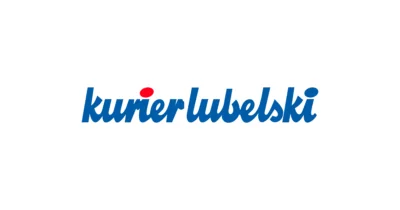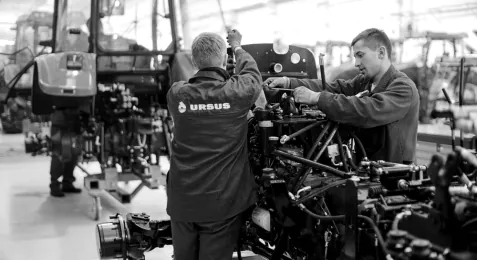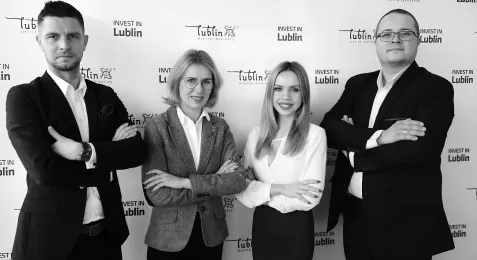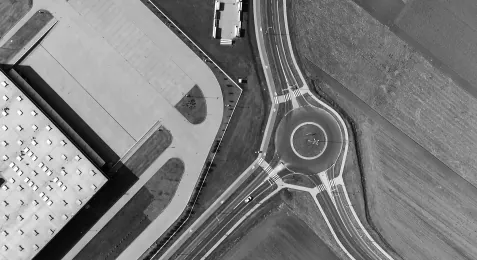Lublin Info Centre
Lublin’s economic evolution: a look at key trends and strategies
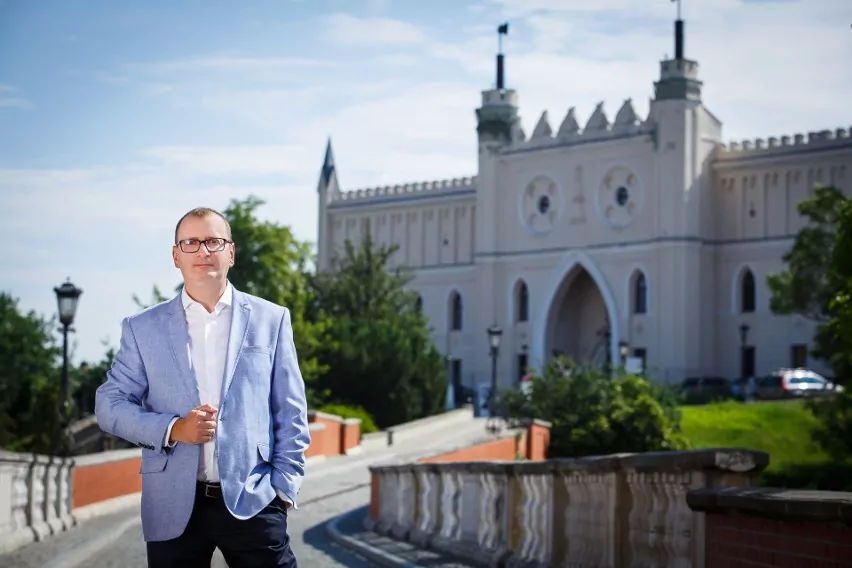
Before I ask about the summary of the last two decades of economic activity in Lublin, could you provide an analysis in light of the economic slowdown in Eastern Poland?
There are several aspects worth highlighting. Looking at unemployment, which is now at a record low, one might conclude that this is the best moment for the Polish and Lublin economies. However, the situation is more complex. Many people are retiring, and we are also facing a demographic decline, so unemployment is not rising, but there is a continuous shortage of workers. Currently, in Lublin, the unemployment rate is the lowest since 1989, at around four percent. That’s one side of the coin, while the other concerns the functioning of businesses. The war in Ukraine has caused some investors to be wary of projects in Eastern Poland, especially Polish capital. On the other hand, we have foreign investments, which shows that investors from outside Poland are willing to take on greater risks. In Lublin and the Lublin agglomeration, significant investments are underway, such as one by Trilux, which specializes in eco-friendly and advanced technological B2B solutions in the lighting industry. It is also important to note the wave of layoffs occurring in Poland over the past few months across virtually every sector. Although we do not yet observe this phenomenon in Lublin, it is a signal that significant changes are ahead.
What changes are you referring to?
We are talking about structural changes that involve transitioning from a low- and medium-investment economic model to a higher level of innovation. Until now, relatively good products were manufactured at low costs and exported, but this model of simple export is beginning to exhaust itself. We are now moving towards more advanced technologies with a higher degree of robotization and automation. This wave of restructuring could be painful. The question is whether we will adapt to these processes.
This also applies to Lublin, although our city is in a somewhat different situation than other centers in the country. Economic changes began here about ten years ago, allowing us to leapfrog the phase of simple production and low-cost assembly. As a result, Lublin’s economy is now more innovative, with many high-tech solutions. However, this pertains to our city, not the entire region. Nevertheless, we are facing such changes, although it is not entirely clear how they will unfold.
Are we talking about Industry 4.0?
Certainly, we are looking forward to more and more implementations of Industry 4.0. This involves restructuring employment at a ratio of three or four to one. In other words, in a manufacturing company where simple processes are automated, the number of employees could decrease from three hundred to one hundred. These individuals will need to find new jobs, and this is a challenge we face.
How will Lublin cope with this process?
We are already on a good path to managing this challenge. Some industrial companies are transitioning to more advanced processes. Although current employment is not declining, restructuring processes have begun. It is also worth remembering that some people leaving the labor market may find employment in the service sector—tourism, hospitality, or gastronomy. This sector has significant potential. The more tourists we attract, the more jobs will be created in this area.
It seems that Lublin is making excellent use of this potential.
I often cite the example of Krakow, which indeed has greater tourism potential, but it is essential how this potential is utilized. Krakow demonstrates that it is possible to create tens of thousands of jobs in this sector. Many of those employed there have transitioned from industrial and manufacturing jobs, which are now marginal in Krakow.
Additionally, in Lublin, medical and healthcare services play a vital role. Not much is said about this, but we should remember that Lublin is a significant medical center and is working to develop inbound medical tourism. Our hospitals and private clinics are chosen by patients from around the world, partly due to advanced medical infrastructure and highly qualified specialists. We must also not forget about the IT sector and the modern business service sector, which is also dynamically developing in Lublin, creating nearly 20,000 jobs.
From this, we can conclude that economic forecasts for Lublin are not so bleak?
In general, we know that the economy will undergo structural changes that will be critical for us as a city; therefore, we are heading towards multi-sectoral development. We are uncertain about what the future will hold in five or seven years. Capital from Poland is emigrating, and there are many risks. For now, Lublin has not felt this directly, but we are observing certain processes and trying to stay ahead of the curve. We can say that this is a matter of our future. Our city has gone through very difficult periods in the past. After the collapse of the old system, our economic situation was dramatic, and the last thing we want to experience is the state we found ourselves in at the beginning of the 2000s. Therefore, we are investing in the balanced development of various sectors of the economy, industry, and services, which will serve as a safeguard in the turbulent times ahead.
Since we’re talking about the early 2000s, let’s summarize the last twenty years of Lublin’s economic situation.
It is important to emphasize that the economy of Lublin has completely changed since Poland joined the European Union. There have been qualitative changes in all areas. Firstly, there were no advanced institutions supporting business at that time. Today, we have dozens of foundations, clusters, associations, and other non-governmental organizations that support business development in Lublin. Support also comes from the city and the provincial governor. Such a system did not exist before. Additionally, in 2007, the Special Economic Zone was established, which is now fully utilized. There was also no sector for supporting innovation and knowledge transfer from universities to businesses, which is now very evident. Most importantly, there is now a professional and consistently implemented economic policy of the city. As a result, the number of people employed in Lublin increased from 100,000 in 2004 to over 170,000 in 2023, which is a radical change.
So we have made a significant economic leap.
Yes, definitely! To summarize, I would like to quote a statement from the Lublin Development Strategy for 2005-2013, which I encountered at the beginning of my work at the City Hall. In the SWOT analysis that defined Lublin’s strengths and weaknesses in 2005, one statement particularly stood out: “There are no strong points in the area of economics.” None! There was no Lublin Science and Technology Park or startup environment, no system of bypasses and expressways, no airport, no ecosystem to support businesses, and no strong IT sector. Today, Lublin is at a completely different stage of development, but also in a new moment. Despite the progress we have made, we are not yet a wealthy European city. We have many years of work ahead of us, but we are gradually striving toward that goal. Moving away from the economy, I would also add that in recent years, the paradigm of urban development has changed.
In what direction?
Urban development towards the 15-minute city has recently become very popular in cities worldwide. This was partly related to the pandemic. During that time, residents began to seek and require services and products in their immediate vicinity. They also looked for spaces for relaxation, walks, and leisure in their local area. This is a significant simplification, but partly due to the pandemic, there has been a return to this concept, where all necessary services and amenities are available within a walking or cycling distance of less than fifteen minutes.
This is a return to earlier concepts of urban development. Today, this idea is referred to as the 15-minute city, popularized by the French urban planner Carlos Moreno. It involves a different perspective on the city. Until now, development was more quantitative and mass-oriented. The number of built apartments, blocks, and roads mattered. Suddenly, it turned out that residents want something different. Yes, they need well-paid jobs, but they also desire well-planned green spaces, developed transportation, and high-quality services that are easily accessible.
Has Lublin recognized these trends and needs?
Yes. A green and sustainably urbanized Lublin is one of the developmental areas in the Lublin 2030 Strategy. The city wants to and is moving in this direction. Of course, this comes with many challenges. Transforming poorly planned districts is costly and time-consuming. This is only the beginning of the transformation, but Lublin’s mission is to create the best possible place to live.
